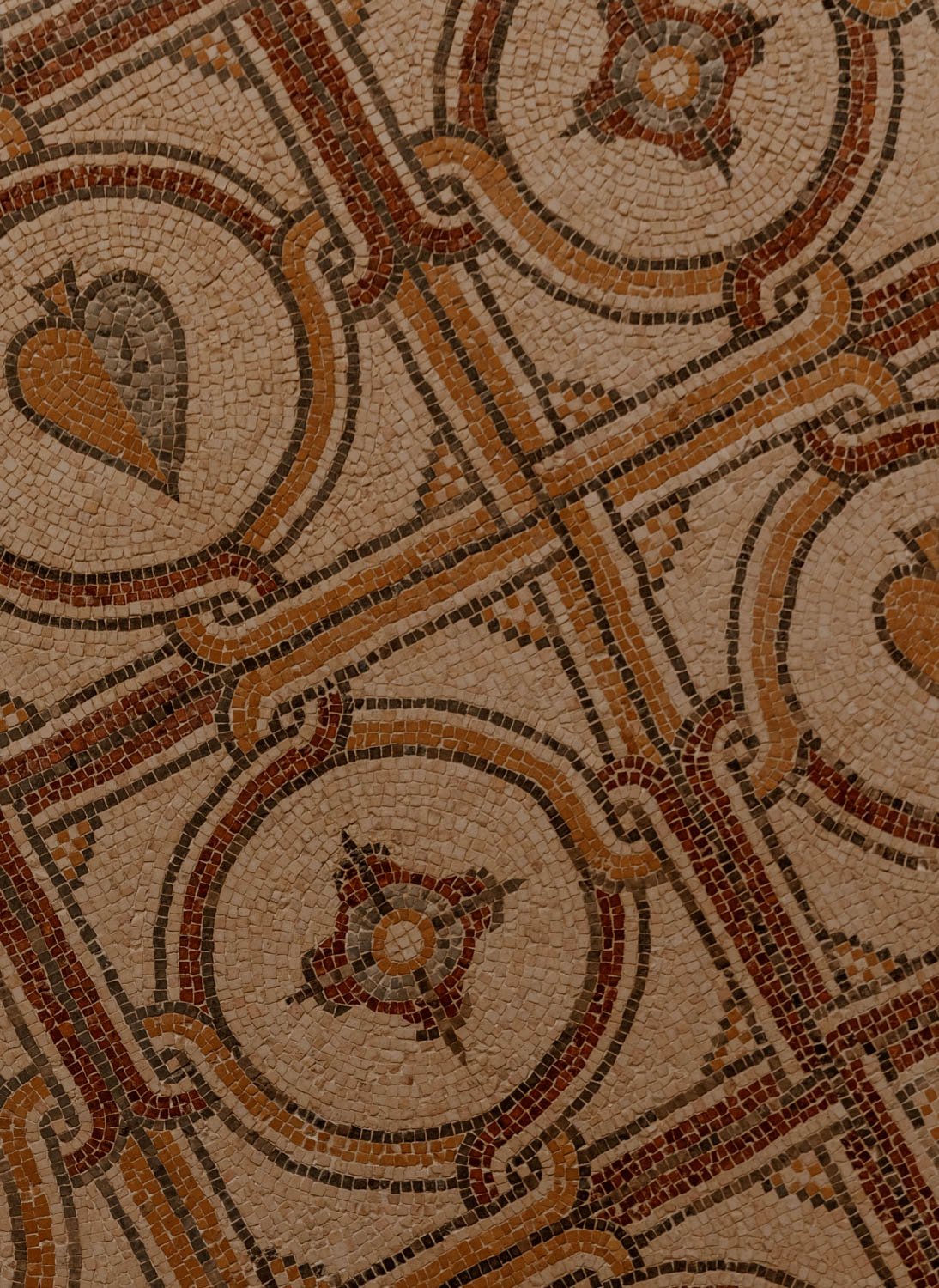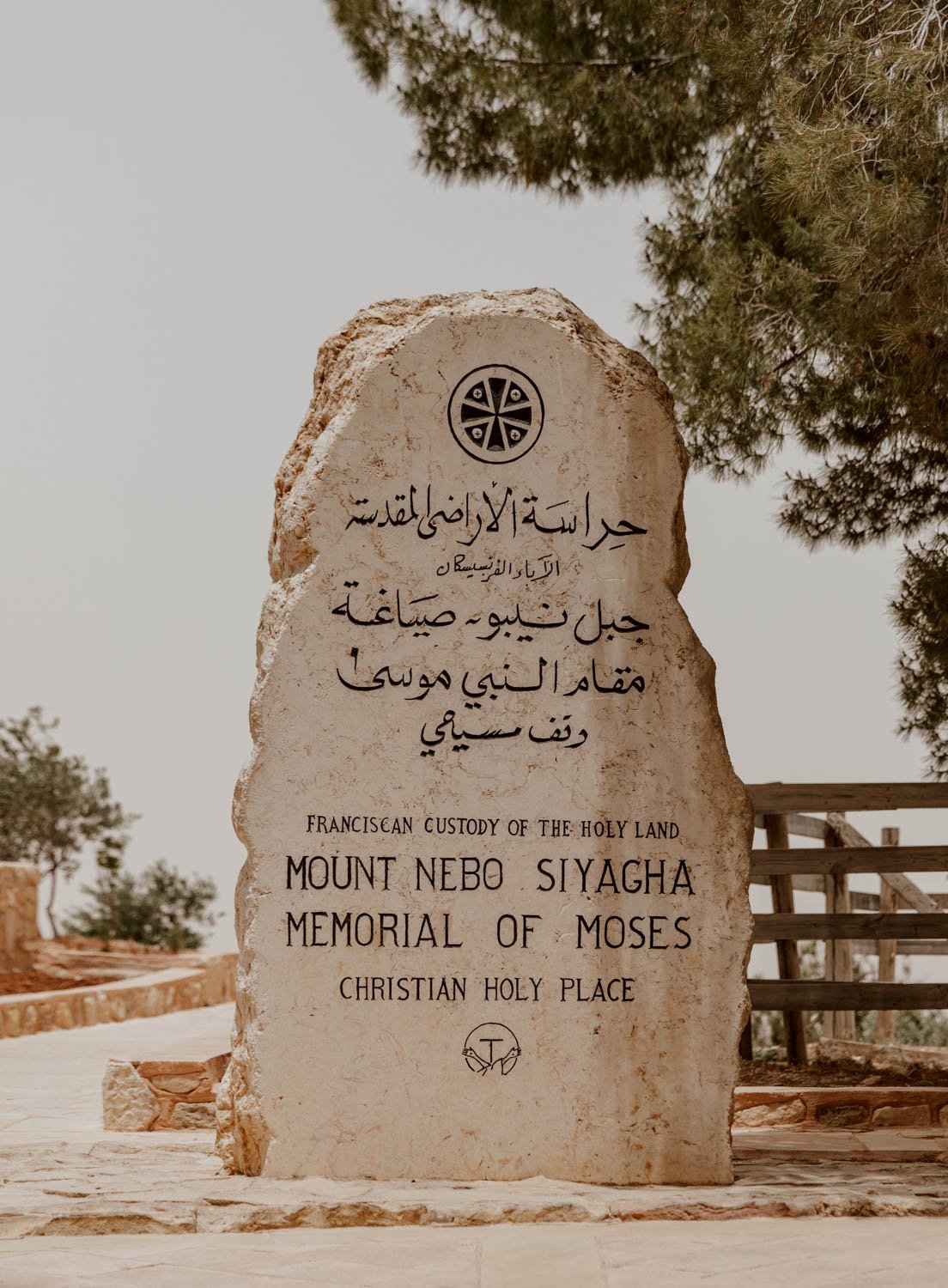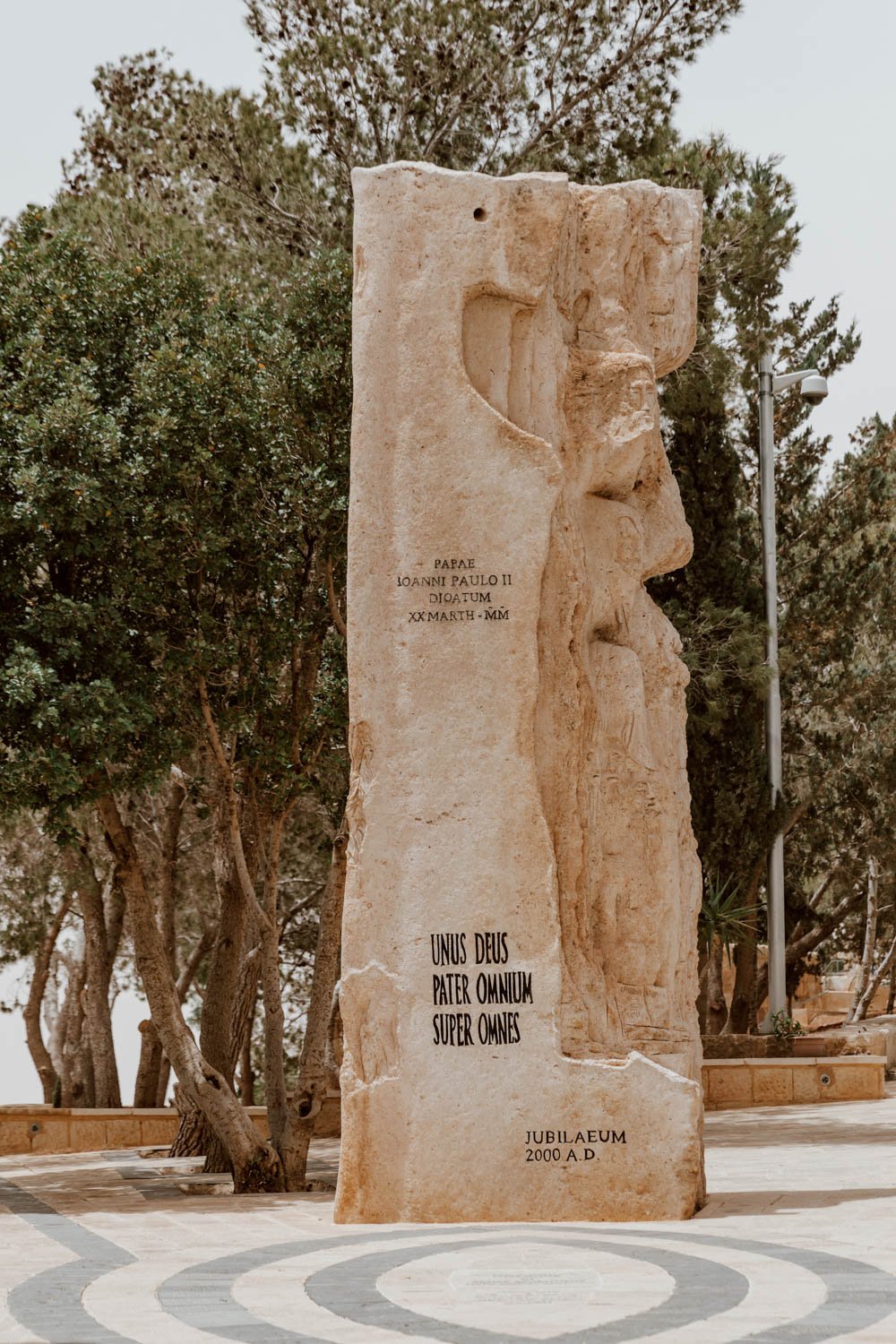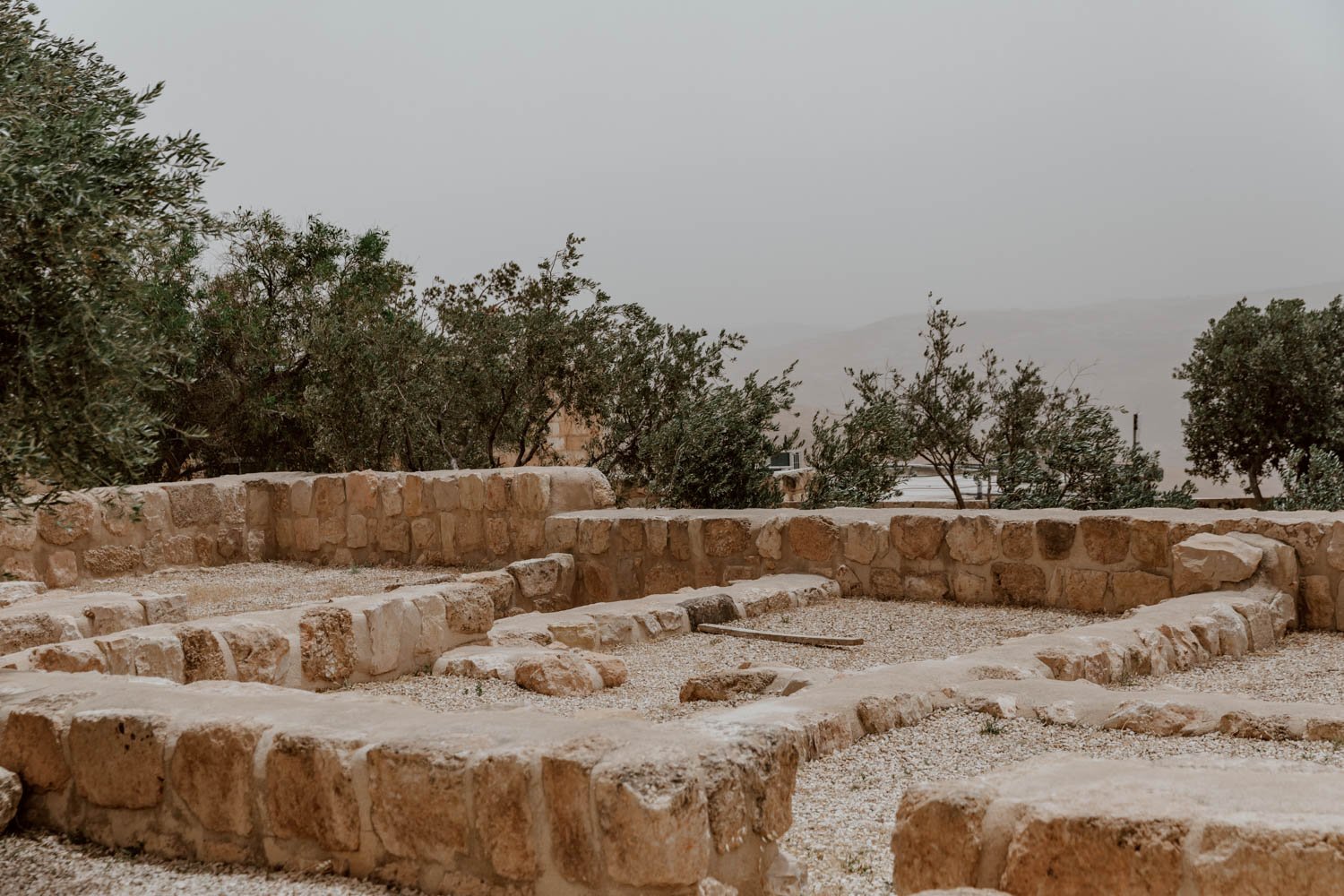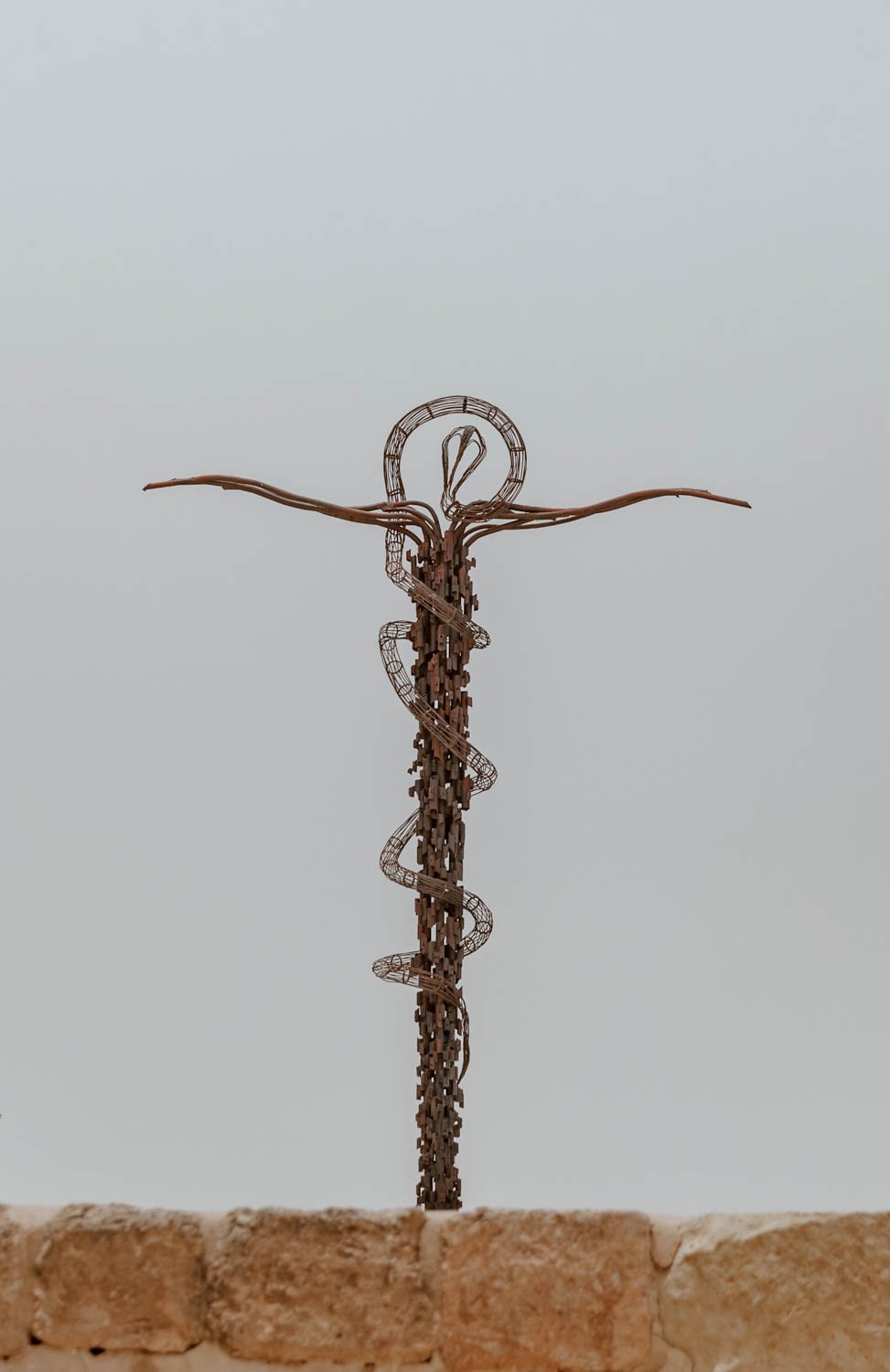A visit to Mount Nebo won’t take long, but its religious significance means it is an essential stop on most Jordan itineraries. In this complete guide you’ll find everything you need to plan your time there.
Updated January 2024
““Then Moses climbed Mount Nebo from the plains of Moab to the top of Pisgah, across from Jericho.
There the Lord showed him the whole land — from Gilead to Dan, all of Naphtali, the territory of Ephraim and Manasseh, all the land of Judah as far as the Mediterranean Sea, the Negev and the whole region from the Valley of Jericho, the City of Palms, as far as Zoar.
Then the Lord said to him, “This is the land I promised on oath to Abraham, Isaac and Jacob when I said, ‘I will give it to your descendants.’ I have let you see it with your eyes, but you will not cross over into it.””
Mount Nebo, a rocky outcrop towering 1,000 meres above the desert and dry farmlands below is one of Jordan’s most important Christian holy sites. Known locally as Siyagha, it is the highest point of the ancient kingdom of Moab and where Moses, according to the Old Testament and scholars that have followed, was granted a view of the Promised Land.
A fateful glimpse of something he would never step foot upon.
Moses died atop Mount Nebo shortly after, with his body buried in the valley of Moab and his grave never to be found.
A place of pilgrimage for early Christians from Jerusalem, a small church was built here in the second half of the 4th century to commemorate the life and death of the man regarded as a prophet by all three Abrahamic religions (Judaism, Christianity, and Islam).
And whilst much has changed, been reconstructed, and redeveloped at this site in the intervening 1600 years, Mount Nebo’s religious and historical significance remains as does the opportunity to cast your eyes across that very same view.
Though an important pilgrimage site first and foremost, particularly for Christians, there is also enough here to interest the non-religious traveller for a short stop on their way between Madaba and the Dead Sea. Indeed, the spectacular mosaics which reside within the walls of the ancient basilica are the best presented you’ll see in the country.
In this short guide we’ll cover everything you need to know to visit Mount Nebo, including what to do and see there, ticket prices and transport options.
How To Get to Mount Nebo
If you’ve got a rental car, you’ll most likely be coming from Madaba, which is an easy 15-minute drive from Mount Nebo. Alternatively, you can add a stop at Mount Nebo on to you day or stay at the Dead Sea (about 35 minutes away).
You can find the a dozen or so free parking spots just outside the visitor centre (here on Google Maps - on your right hand side if driving from Madaba). If they’re all occupied though, just turn around and you’ll find a much larger overflow car park a little further back (here on Google Maps).
If you’re not doing a Jordan road trip, it’s possible to take a shared taxi from Madaba for around 1JD per person, or a private taxi for 5JD (8JD return, with one hour waiting time).
It’s common for Madaba taxi drivers to offer to combine trips to Mount Nebo with the Bethany Beyond the Jordan site for approximately 20JD.
Alternatively if you’re using Amman as a base and don’t have a rental, there are a number of private tours which can be booked in advance, like this well priced half-day tour which includes hotel pick-up, time to explore Madaba, and your visit to Mount Nebo.
If you’d prefer a group tour, consider this highly-rated full day option which includes Madaba alongside Mount Nebo, Bethany Beyond the Jordan and time to relax upon by the Dead Sea.
Mount Nebo Entrance Fees & Opening Times
Unfortunately, as with many privately owned sites across Jordan, entrance to Mount Nebo is not included in the Jordan Pass - and prices have increased quite significantly over the last few years following investment and redevelopment of the site.
Entry now costs 3JD per person, paid at the ticket office by the main entrance. When we visited, the card machine wasn’t working, so it’s a good idea to have some cash. Tickets cannot be purchased in advance online.
Mount Nebo has variable opening hours dependent upon what time of year you visit:
December & January | 8am-4pm
November, February & March | 8am-5pm
April to October | 8am-6pm
It’s worth noting that Mount Nebo is a common stop for large tour bus groups, so try to time your wanderings accordingly. In total, you should factor in an hour or so for your visit.
As it’s an important and active religious and pilgrimage site, visitors should dress and act accordingly. Modest dress is expected, hats should be removed when entering the church, and respect, privacy and space should be given to the experience of worshippers.
There are bathrooms and a small cafe / shop on site.
The Viewpoint
There is something terribly profound about looking over the same view, from the same spot as one of the Old Testament’s most important figures; to gaze out across the Holy Land, over the Dead Sea, Jericho, the Jordan River, Bethlehem and, on a particularly clear day, as far as Jerusalem.
Except unfortunately for us, our visit took place during a particularly bad sand storm, with close to no visibility meaning we had to rely on our imaginations and some well-placed signs.
If Moses had climbed to the top of Mount Nebo in similar conditions, well, things would be quite different in the Middle East today.
You can enjoy the panorama from multiple points within the complex, but the best vista is from the viewing platform erected for Pope John Paul II’s visit to commemorate the beginning of the new millennium, located next to the large Serpentine Cross (to symbolise the bronze serpent taken by Moses into the desert, as well as the cross upon which Jesus was crucified).
(sidenote: the ‘Promised Land’ in the Bible is an area called Canaan. It was promised by God to Abraham and his descendants, and Moses was about a sixth-generation grandson. Today, Canaan would encompass parts of modern day Palestine, Syria and Israel. However, Canaan and the term ‘the Promised Land’ are also sometimes viewed as synonymous with Israel and a homeland for the Jewish people. The land ones sees from Mount Nebo encompasses Israel and Palestine - the ancient, Biblical, and disputed modern-day equivalents - but this post isn’t the place to go in-depth on the complex, contentious history and ongoing issues of occupation and conflict in the region. However, we wanted to address it briefly here given there is a constant thread from the religious importance given to the lands seen from Mount Nebo to the current day disputes over to whom they belong).
The Church
As we mentioned above, the original church to stand on this point was built in the 4th century, to commemorate the life of Moses. Over the following years however it underwent a significant degree of development; first to include a nave, then a baptistery, then finally - in 597 AD - to include the main basilica and monastery.
Abandoned in the 16th century, it lay hidden for hundreds of years before being relocated in the 20th century, bought by the Franciscans - a religious order founded by St. Francis of Assisi - excavated, and lovingly reconstructed.
What now stands at the site of Moses’ first and only glimpse of the Promised Land is a relatively modest, modern church, but one which houses a vast number of some of Jordan’s most impressive and best preserved mosaics.
We explain more in our guide to Madaba about the heritage of vast, intricate mosaics in this area, and you can see several in the city within their original setting. The Mount Nebo church offers this, but goes a step further with more gallery-level lighting and displays so you can really appreciate the skill, colour, and craft in the tiles.
Some are fragments, some are whole, and some are somewhere in between, but the most most remarkable is the fully intact Diakonikon mosaic. Created around the 6th century AD, it was only rediscovered in the 1970s underneath another mosaic floor when the Franciscans were doing redevelopment work.
With vibrant colours, it depicts several scenes with hunters, shepherds, and an ostrich, lions, a zebra, and a giraffe. In a nice quirk, the far less detailed mosaic that it was hidden under for centuries - but also the reason why it was so wonderfully preserved - is now displayed on the wall above it.
Be sure to allow enough time to properly appreciate them.
Although it can feel like the mosaics are the main attraction inside, remember that the church is an active place of worship and prayer.
The Museum
Although far from the most impressive museum in Jordan, it’s still worth popping into the small on-site museum - otherwise known as the Mount Nebo Interpretation Centre - which contains a number of mosaics salvaged from churches in Khirbat al-Mukhayyat and 'Ayoun Musa, alongside Roman milestones (to direct pilgrims to the site) and Iron Age Moabite pottery.
There are also several information boards which explain the history of the area with written accounts of ancient pilgrims to Mount Nebo.
Your Next Stop
11 Wonderful Things to Do in Amman
A Complete Guide to Visiting Petra
A Complete Guide to Madaba | The Mosaic City of Jordan
A Guide to Canyoning in Wadi Mujib | The Best Adventure in Jordan
23 Thing to Know Before You Visit Jordan (published soon)
17 Things To Know Before Driving In Jordan




